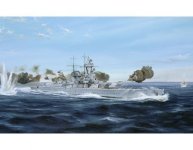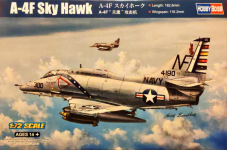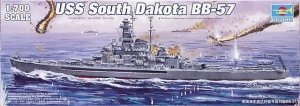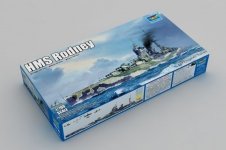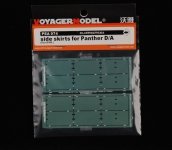Trumpeter 05782 USS Tennessee BB-43 1944 1/700
Plastikowy model do sklejania. Zestaw nie zawiera kleju i farb.
USS Tennessee (BB-43) – amerykański pancernik typu Tennessee z okresu II wojny światowej. Był to trzeci okręt w historii United States Navy noszący nazwę upamiętniającą 16 stan USA.
Zamówienie na budowę okrętu zostało złożone 28 grudnia 1915 w stoczni New York Navy Yard. Stępkę pod budowę okrętu położono 14 maja 1917. Wodowanie okrętu miało miejsce 30 kwietnia 1919, wejście do służby 3 czerwca 1920. Matką chrzestną była córka gubernatora stanu Tennessee. Przy budowie okrętu zastosowano rozwiązania konstrukcyjne opracowane na podstawie analizy uszkodzeń okrętów podczas bitwy jutlandzkiej. Wzmocniono m.in. opancerzenie podwodnej części kadłuba, a także zainstalowano niezależne centrale kierowania ogniem dla dział artylerii głównej i pomocniczej. Nowością było także zwiększenie kąta podniesienia dział artylerii głównej do 30 stopni, co znacznie zwiększyło zasięg prowadzonego ognia.
Tuż po zakończeniu prób na morzu, doszło do eksplozji jednego z generatorów, w wyniku czego rannych zostało dwóch członków załogi. Z powodu wypadku i związanego z nim remontu, okręt mógł opuścić Nowy Jork dopiero 28 lutego 1921. Po kolejnej serii prób i testów 19 czerwca okręt przybył do San Pedro w Kalifornii. Port ten pozostawał jego macierzystą bazą przez kolejne 19 lat. Okręt działając w ramach Floty Pacyfiku, uczestniczył w regularnych ćwiczeniach i manewrach na morzu. W 1925 uczestniczył w manewrach które zakładały współpracę z siłami lądowymi przy obronie Hawajów.
7 grudnia 1941 w czasie gdy japońskie samoloty rozpoczęły atak „Tennessee” stał zakotwiczony w Alei Pancerników w Pearl Harbor. Okręt przy pomocy artylerii przeciwlotniczej odpierał atak Japończyków. W wyniku ataku odniósł niewielkie uszkodzenia. Naprawę w stoczni wykorzystano do wzmocnienia uzbrojenia przeciwlotniczego i zamontowania radaru kierowania ogniem. W lutym 1942 okręt rozpoczął ćwiczenia z wchodzącą w skład Floty Pacyfiku grupą okrętów „Task Force 1". 14 sierpnia okręt wszedł do bazy Puget Sound gdzie został poddany modernizacji, które zakończyła się w maju 1943. Na okręcie przebudowano nadbudówkę, a także wzmocniono obronę przeciwlotniczą, wyposażoną w nowy radarowy system kierowania ogniem. W czerwcu zabezpieczał lądowanie marines na Aleutach, gdzie po raz pierwszy wspierał walczące na lądzie wojska ogniem działa artylerii głównej. W listopadzie uczestniczył w walkach o Tarawę podczas których wziął udział w zatopieniu japońskiego okrętu podwodnego I-35. 31 stycznia 1944 rozpoczął ostrzał japońskich pozycji w rejonie wysp Marshalla. W 1945 okręt wspierał walczące wojska w walkach o Iwo Jimę i Okninawę.
Okręt został wycofany ze służby 14 lutego 1947. 10 lipca 1959 sprzedano go na złom.
USS Tennessee (BB-43) was the lead ship of the Tennessee class of dreadnought battleships built for the United States Navy in the 1910s. The Tennessee class was part of the standard series of twelve battleships built in the 1910s and 1920s, and were developments of the preceding New Mexico class. They were armed with a battery of twelve 14-inch (356 mm) guns in four three-gun turrets. Tennessee served in the Pacific Fleet for duration of her peacetime career. She spent the 1920s and 1930s participating in routine fleet training exercises, including the annual Fleet Problems, and cruises around the Americas and further abroad, such as a goodwill visit to Australia and New Zealand in 1925.
Tennessee was moored in Battleship Row when the Japanese attacked Pearl Harbor on 7 December 1941, which brought the United States into World War II. She was not seriously damaged, and after being repaired she operated off the West Coast of the US in 1942. In 1943, Tennessee and many of the older battleships were thoroughly rebuilt to prepare them for operations in the Pacific War and in June–August, she took part in the Aleutian Islands Campaign, providing gunfire support to troops fighting to retake the islands. The Gilbert and Marshall Islands campaign followed from November 1943 to February 1944, including the Battles of Tarawa, Kwajalein, and Eniwetok. In March, she raided Kavieng to distract Japanese forces during the landing on Emirau, and from June through September, she fought in the Mariana and Palau Islands campaign, bombarding Japanese forces during the Battles of Saipan, Guam, Tinian, and Anguar.
The Philippines campaign followed in September, during which the ship operated as part of the bombardment group at the Battle of Leyte. The Japanese launched a major naval counterattack that resulted in the Battle of Leyte Gulf, a series of four naval engagements. During the Battle of Surigao Strait, Tennessee formed part of the US line of battle that defeated a Japanese squadron; this was the last battleship engagement in history. Tennessee shelled Japanese forces during the Battle of Iwo Jima in February 1945 and the Battle of Okinawa from March to June. During the latter action, she was hit by a kamikaze but was not seriously damaged. In the final months of the war, she operated primarily in the East China Sea, and after Japan's surrender in August, she participated in the occupation of Japan before returning to the US late in the year. In the postwar draw down of naval forces, Tennessee was placed in the reserve fleet in 1946 and retained, out of service, until 1959, when the Navy decided to discard her. The ship was sold to Bethlehem Steel in July and broken up for scrap.




















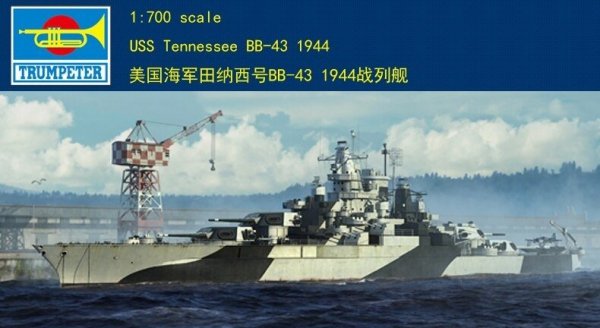

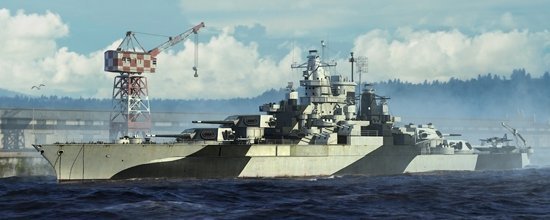

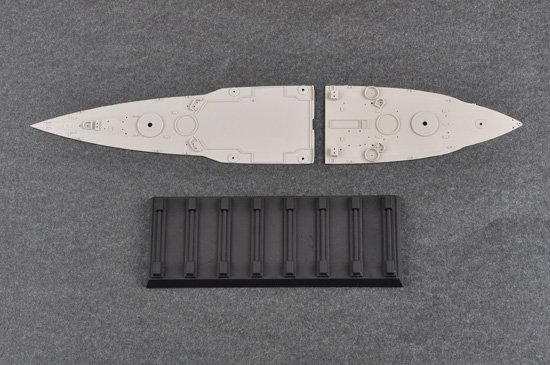
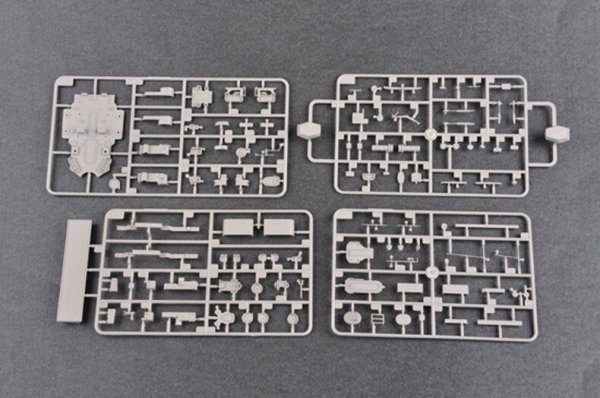
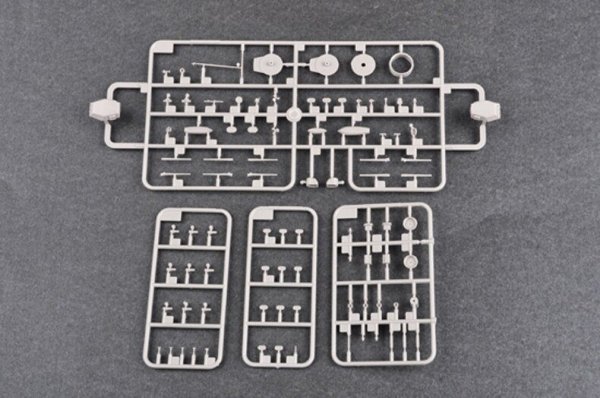

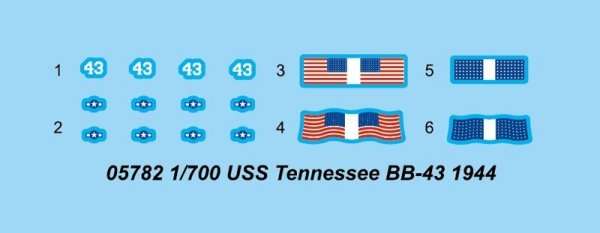

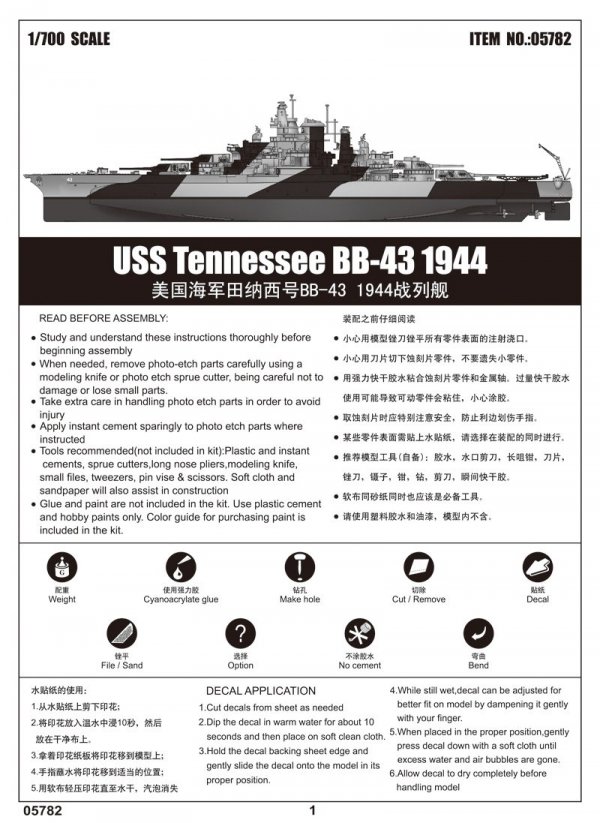

 2 szt.
2 szt.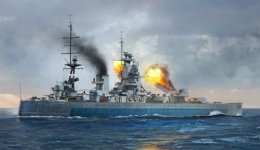
 1 szt.
1 szt.


 252 szt.
252 szt.